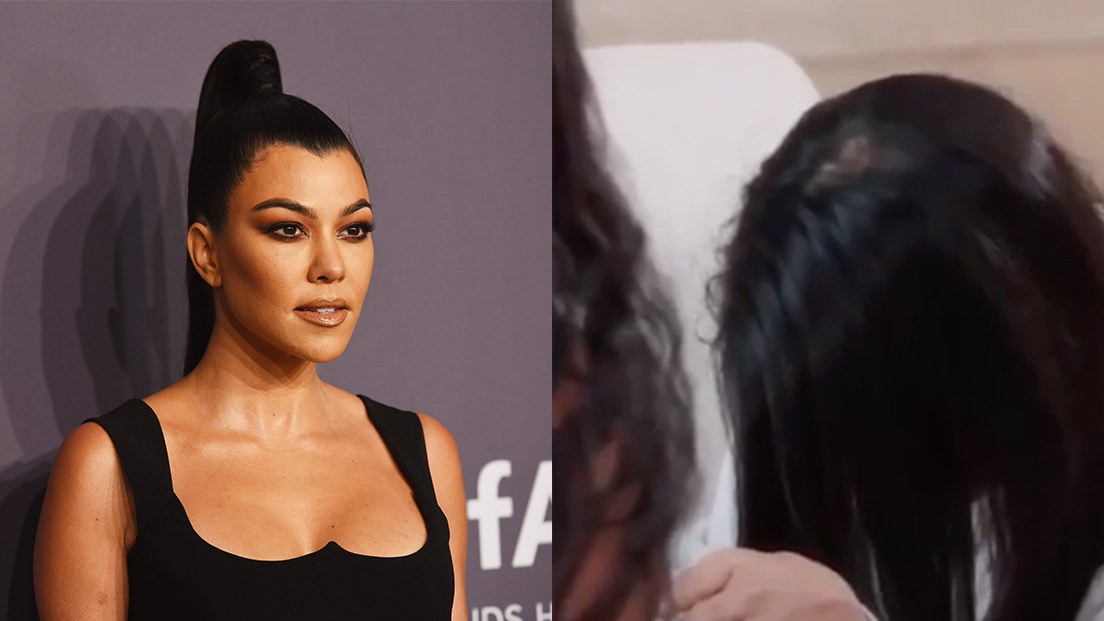Kourtney Kardashian Got Scalp Injections to Treat a Bald Spot

Ever since she figured out how to manage her relationship with Scott Disick, Kourtney Kardashian‘s storylines on Keeping Up With the Kardashians have been a relatively drama-free. But during the show’s season 17 (!!!) premiere Sunday night, the eldest sister was facing a beauty emergency.
During a scene with Kim, the sisters discuss a not-small bald spot that has formed on the top of Kourt’s head. “Kourtney, you have a really big spot on the top of your head,” Kim said. “Look down, Kourtney. Oh my god, I’m afraid for your life. Have you seen that?” “No, but I feel it,” Kourtney replied. “It’s a hole in my head. I swear it’s from my ponytail, it was so tight that I had a bump on my head like this.” Obviously, Kim is being overly dramatic, but the spot is noticeable in the clip below.
“Hair loss is not always genetic in nature,” Dr. Steve Fallek, plastic surgeon and medical director at BeautyFix Med Spa, tells Glamour. “Physical and mechanical stress can weaken and even damage the hair follicle leading to hair loss. Tight ponytails can certainly pull your hair out of the hair follicle and is a common cause of hair loss. Coloring your hair or treating your hair with harsh chemicals can also contribute to this. Weight loss, nutritional changes, medications, as well as stress are other typical factors for hair loss.”
Of course, when you’re a Kardashian, you have pretty much any beauty treatment available to you at any given moment, so Kourtney heads to see Dr. Jason Diamond later in the episode to address the bald spot with scalp injections. “Today I’m getting PRP [platelet-rich plasma], which is where they take your blood and spin it and they use your plasma and they inject it in my head for my hair to grow back,” she said.
Plasma treatments for conditions like alopecia are becoming more popular, and Kourtney did a pretty good job explaining the basics. Blood is taken from the patient and put into a centrifuge to separate out the plasma that will then be used for the injections. According to the Cleveland Clinic, the plasma “helps repair blood vessels, promote cell growth and wound healing, and stimulate collagen production.”
“Given its name, PRP is rich in platelets which have a large number of multiple growth factors, which help the hair follicles to grow,” Fallek says. “The PRP is then injected into your scalp where there is hair loss. A topical anesthetic is normally applied prior to injections and the treatment takes about five to 10 minutes.” He says that treatment is varied, but that most doctors will inject areas of alopecia monthly for three months initially and then twice a year for maintenance. You can expect to notice improvement after two to three months.”
Here’s hoping Kourt gives us an hair growth update soon.



